The ABC Trek is one of the most-hiked in Nepal, taking you from lush green valleys all the way above 4,000m to the Annapurna Basecamp, where you find yourself encircled by some of the Himalayas’ highest peaks.
It takes 7 to 11 days, depending on your pace and where you start. It’s definitely worth the effort, as the views are just out of this world.
While you can do the trek through an organized tour, or with the help of a locally recruited guide or porter, it is also possible to trek ABC independently or even solo.
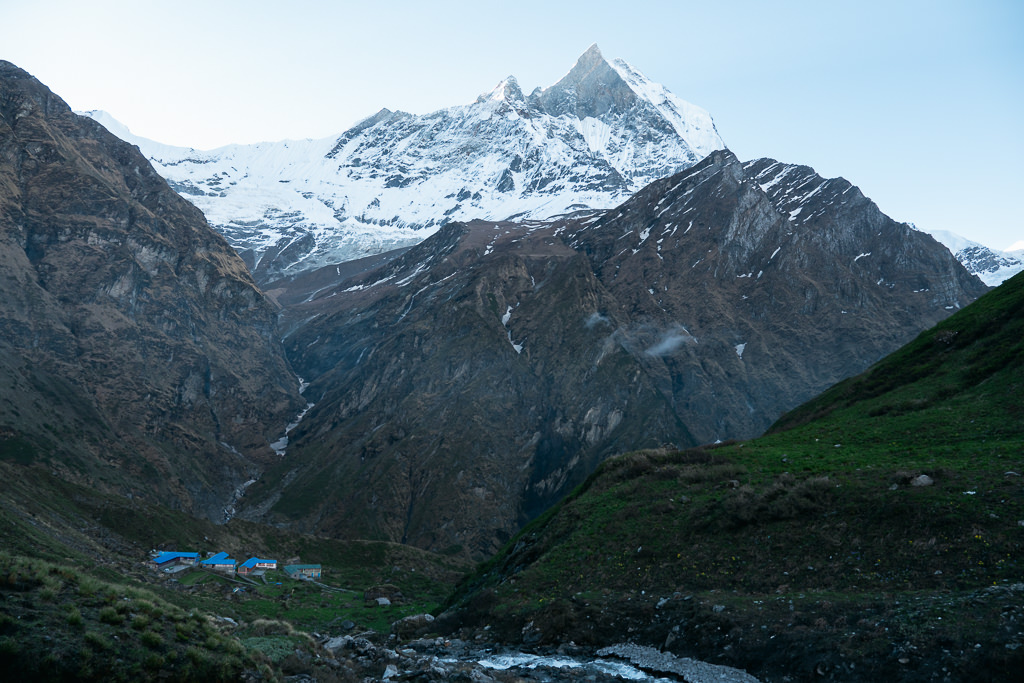
I chose to trek to Annapurna Basecamp independently. Based on my experience (in 2017, post updated in 2021), I will share a few tips and insights. (And for much more about Nepal, don’t miss my backpacker’s travel guide to Nepal!)
Independently or guided?
It is very common to hire guides or porters (people who can carry your luggage) when trekking in Nepal.
It may feel a bit excessive to do this, especially if you’re a good walker, though it benefits the local economy a lot and can make trekking more enjoyable. Hiring guides or porters is often highly encouraged and no one thinks less of you for using a porter.
Costs are very reasonable by Western standards: about $10-$15 per day for a guide or $5-$10 for a porter.
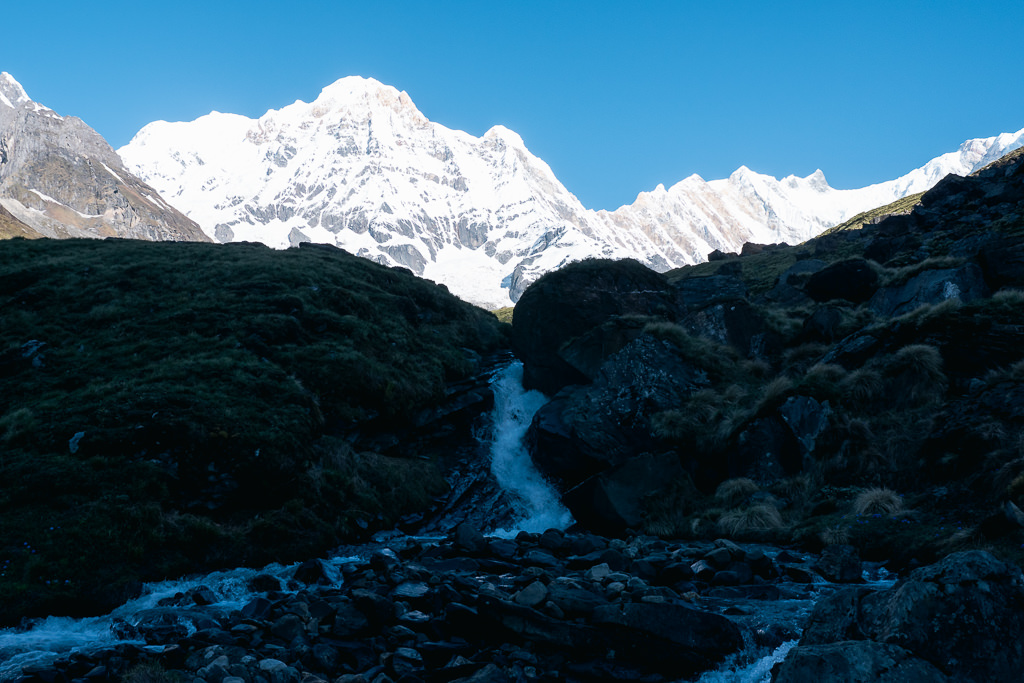
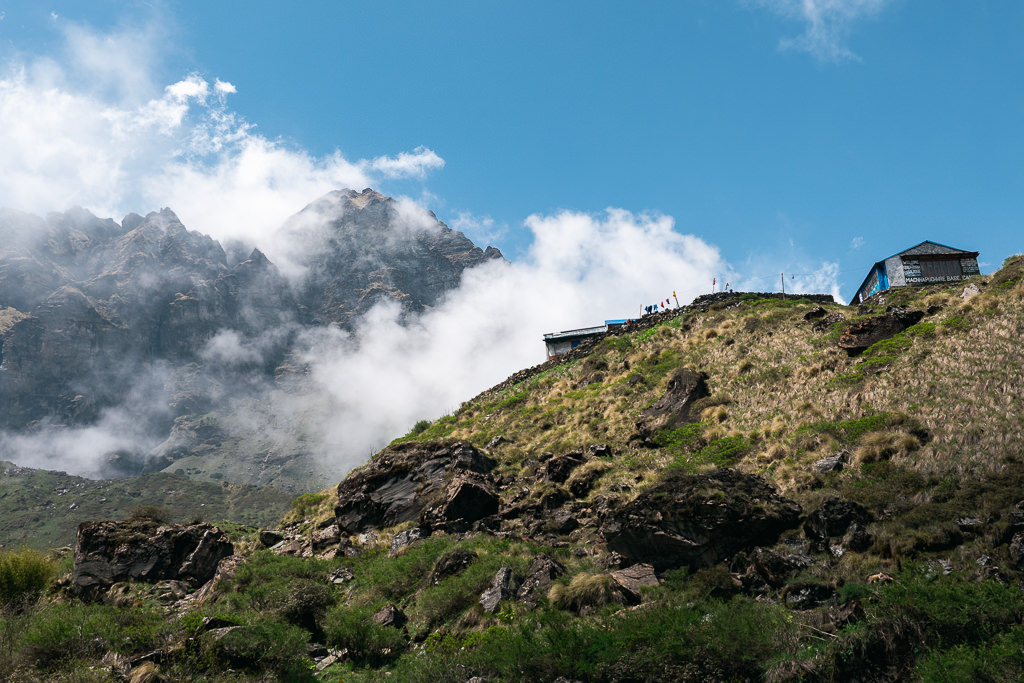
Some benefits to guides that are often touted include their safety expertise, as well as the friendship and knowledge they can share.
That said, on a popular trek like ABC, it’s certainly also very possible to trek independently. This isn’t stated very explicitly online, as most websites about the trek are from tour companies, but it’s absolutely a common way to do it.
Advantages of taking a guide:
- A bit safer if you are trekking alone
- It could be more fun to hike with a group
- Your accommodation is pre-booked (advantage in busy peak season)
- Provides more support if you’re inexperienced
Advantages of going independently:
- You don’t have to pay $400 to $800 for a trekking package
- You can set your own pace entirely
- You can enjoy the epic views even after the groups have left
Personally, I preferred to just hike with my friend without a group or guide. Since it’s a popular trail and there are guesthouses at least every two hours or so, I found this to be perfectly doable.
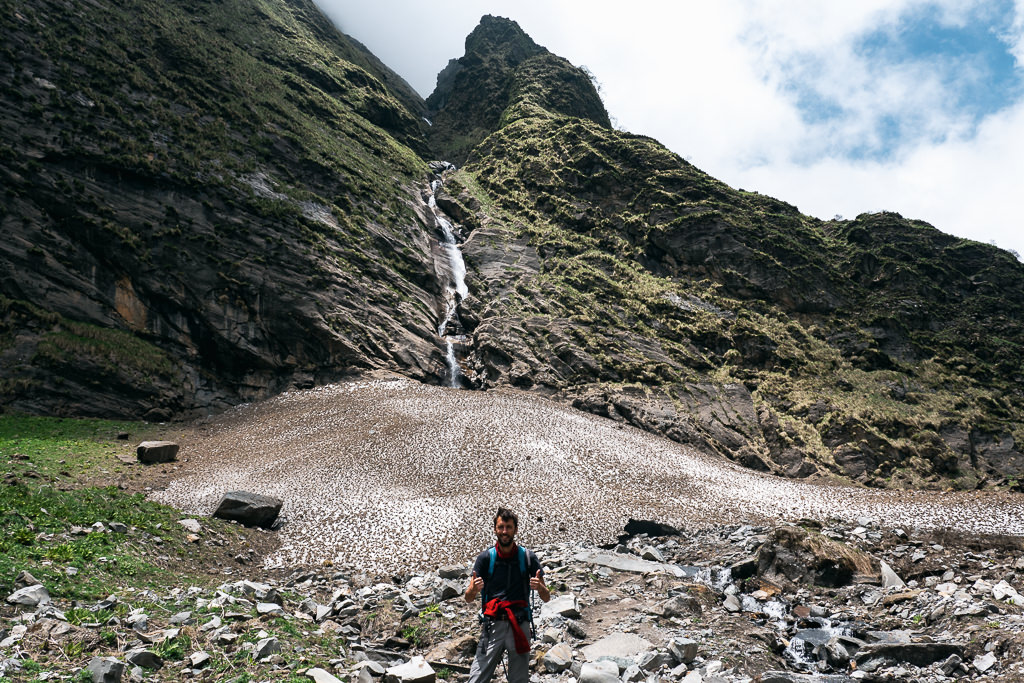
By the way, whether you hike by yourself or with a guide, it’s highly advised to get travel insurance.
I met a guy during my trek who injured his knee and needed to be taken to a hospital; his helicopter ride cost over $10,000 but was fully covered by his insurance. It’s great to have for situations like this.
I recommend insurance from Heymondo; be sure to tick the box for the ‘adventure sports’ add-on, so that you are covered even for altitudes of above 3,000m (this trek reaches 4,130m).
Insurance (includes mountain trekking)
Travel Advice
Travel insurance will cover you for theft, medical expenses, cancellation, and more. Heymondo offers great coverage, no excess or deductibles, and an app with 24/7 assistance & doctor chat.
5% Off With Indie Traveller
Annapurna Basecamp vs. Circuit
Something important to understand is that the trek to Annapurna Basecamp is not the same as the Annapurna Circuit.
The Annapurna Circuit goes in a huge circle all around the Annapurna massif and typically lasts at least 2 or 3 weeks.
The Annapurna Basecamp Trek goes straight to — you guessed it — the Annapurna base camp at 4130m and then back again the same way. It usually takes 7 to 10 days.
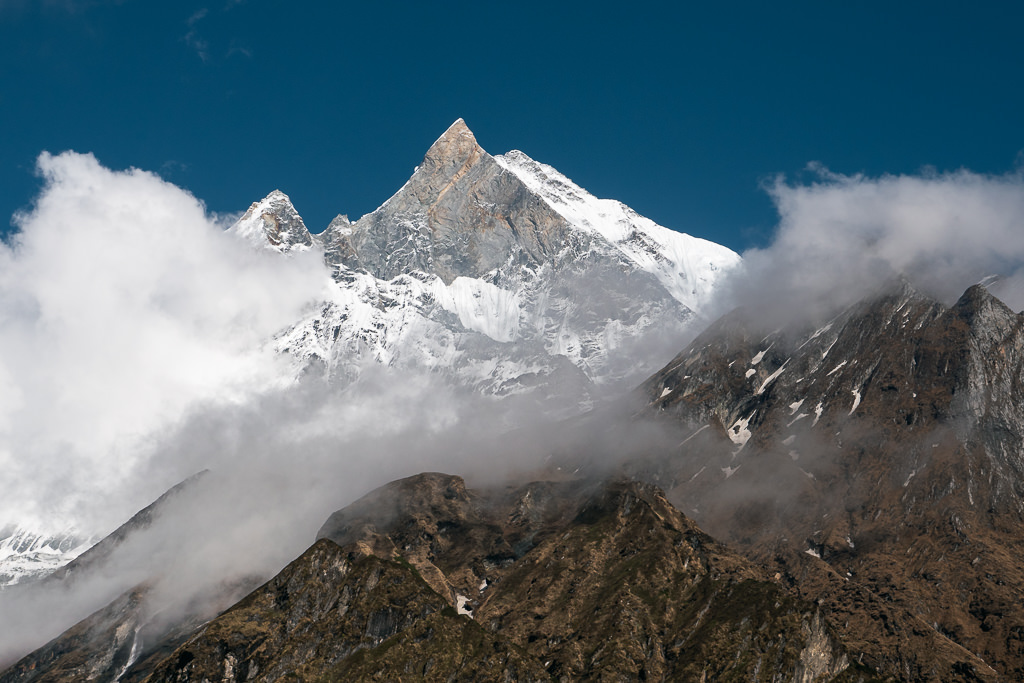
Confusingly, this trek is known under various names:
- Annapurna Basecamp Trek
- ABC Trek
- Annapurna Sanctuary Trek
- Annapurna South Trek
To be clear, these all refer to the same trek!
The best time to go
I have only done this trek once, so I’m not going to speak for what it’s like across the year, as I simply haven’t experienced it.
All I can say is that the time I chose worked out very well.
I liked doing the Annapurna Basecamp trek in summer as it meant fewer worries about the cold. I did it at the very end of the hiking season in late May, when accommodation is easy to arrange by yourself (you basically just show up).
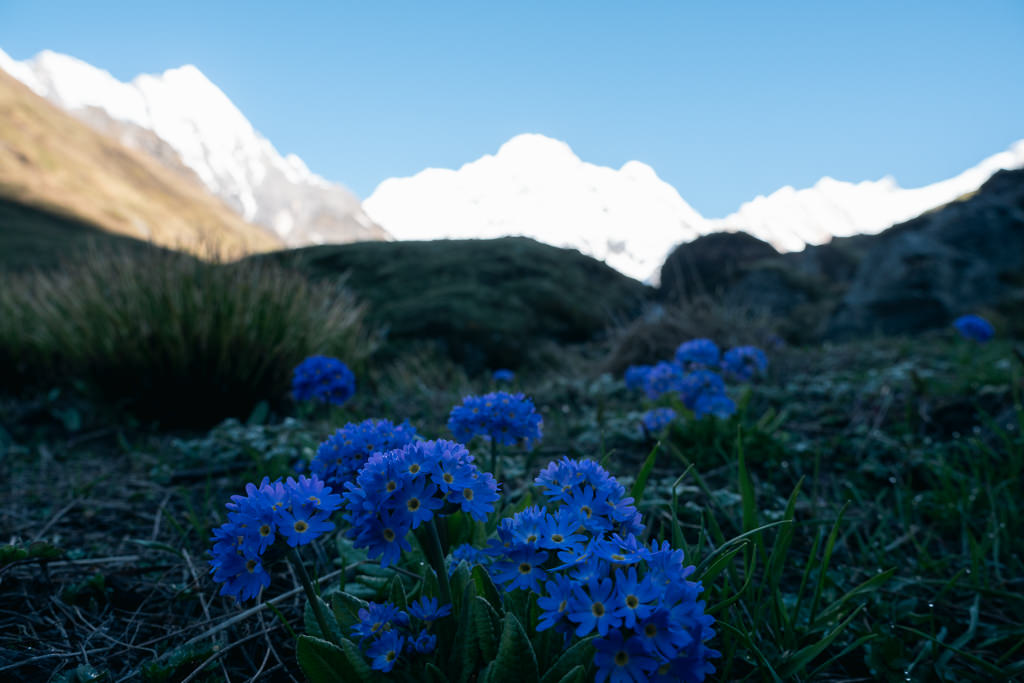
The late May / early June timing turned out to be a real blessing. It’s at the tail end of the hiking season but before the monsoon arrives. There is a greater risk of adverse weather during this time, though I luckily had no issues. And what’s amazing during this time is that it’s quiet!
I met other trekkers only every now and then. There were enough people to ensure a nice atmosphere at the tea houses, but not so many as to detract from the nature experience. Amazingly, when my friend and I made it to the top, there were only two other trekkers there.
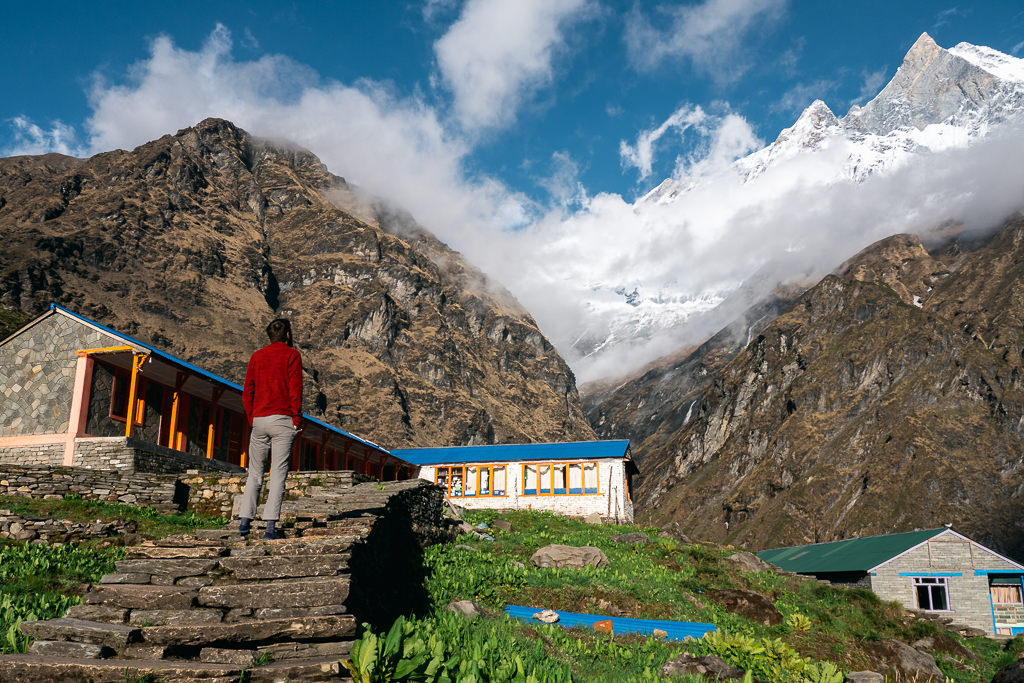
I’ve heard the peak months of October or November get much busier. Those who’ve done it described it to me as basically a single conga line of people going up the mountain. This sounded rather different from the serene and quiet experience I had.
A Nepali hiker who’d done ABC several times told me that in the peak of high season, it’s sometimes difficult to find a place to sleep when you’re trekking independently. This meant that on one occasion he had to sleep in the dining room. Perhaps during these peak times, it’s best to pre-book with a guided group.
Is the ABC Trek difficult?
Short answer: yes, it’s difficult!
Mind you, it’s not difficult in the sense of logistics. You’re never too far from another guesthouse or resting area, and the paths are very well sign-posted and easy to follow.
What’s difficult is just how much climbing you will have to do. Expect to have to grit your teeth a few times!
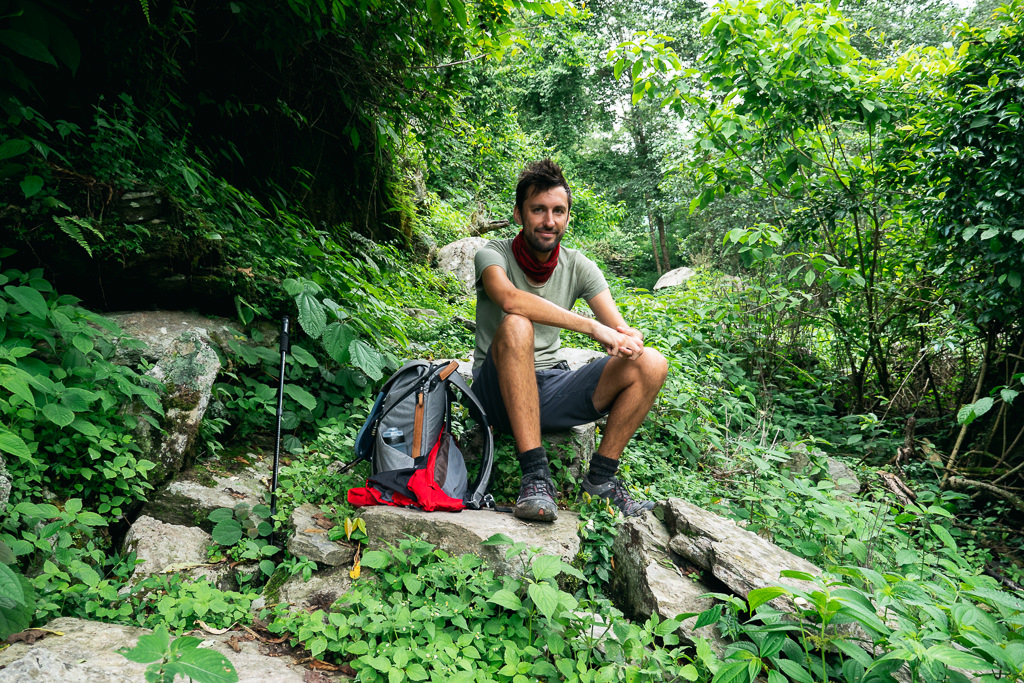
Trekking to ABC was honestly among the more exhausting things I’ve done. It gets particularly fierce mid-way through when you quickly ascend 500m, then descend 500m, and ascend 500m again. The climb is more gradual after that, though the air gets thinner at this point as well.
Still, I completed the trek on just an average fitness level (though I do like to hike). My friend, who rarely hikes and wasn’t at the best fitness level, made it to the top as well. In his view, you don’t necessarily need the most strength to make it, just enough strength of character to keep going. Wise words.
How many days needed
The length of the trek depends. As you research the ABC trek, you’ll no doubt see various lengths mentioned.
Firstly, there are several different starting points, which can make your trek longer or shorter. Early on, you can also take a detour to Poon Hill and other places. I chose not to do this, but it can add some days to your trek.
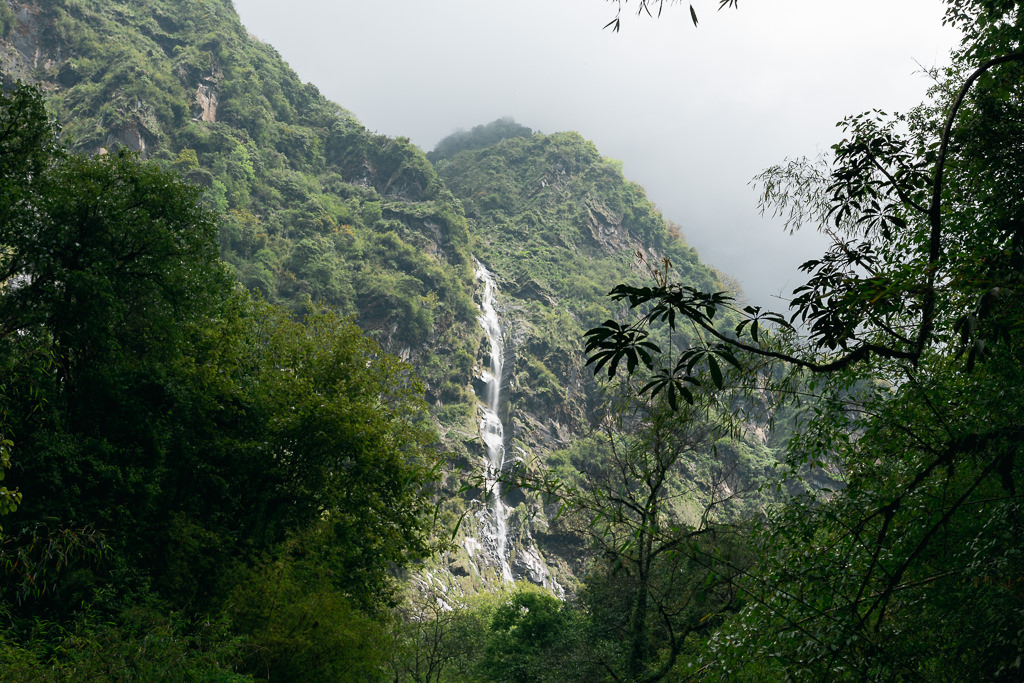
Some itineraries are very careful to manage the altitude changes, putting in loads of time for acclimatization. Others are a bit quicker for more experienced trekkers.
I did the trek in 7 days, starting from Siwai. I met some hardcore trekkers who did it in 6 days, though this is unusually fast and leaves very little time for altitude acclimatization, so I wouldn’t count on being able to do it this fast. At a more leisurely pace, count on 8 or 9 days, but it’s possible to spend up to 12 by doing the side-routes.
Route and what to expect
The route is quite straightforward, essentially going in a direct line to the end-point, so you won’t be easily confused about which path to take.
Local stores in Pokhara sell trekking maps; just grab up and you should be ready to go. The latter half of the trek (anywhere after Chomrong) is especially easy to follow, but I think it’s always worth having a basic map, especially one that doesn’t need a battery charge.
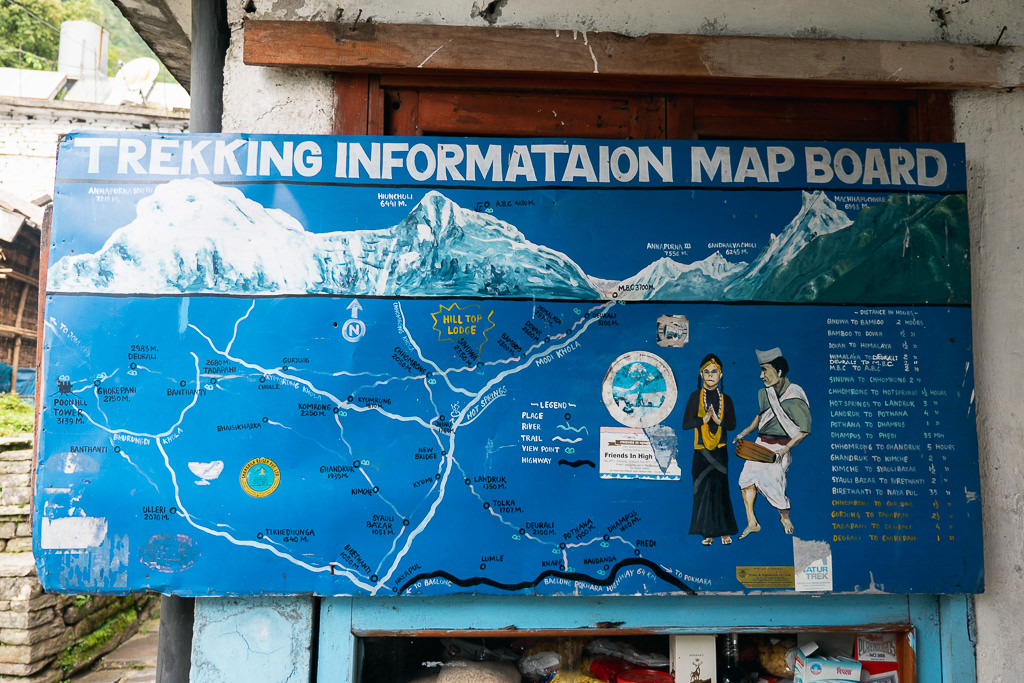
I could imagine snowfall during winter making things more complicated. Keep in mind I’m talking in this post about my summer trek in May, when visibility was great.
Below is my crude map of the core Sanctuary Trek:
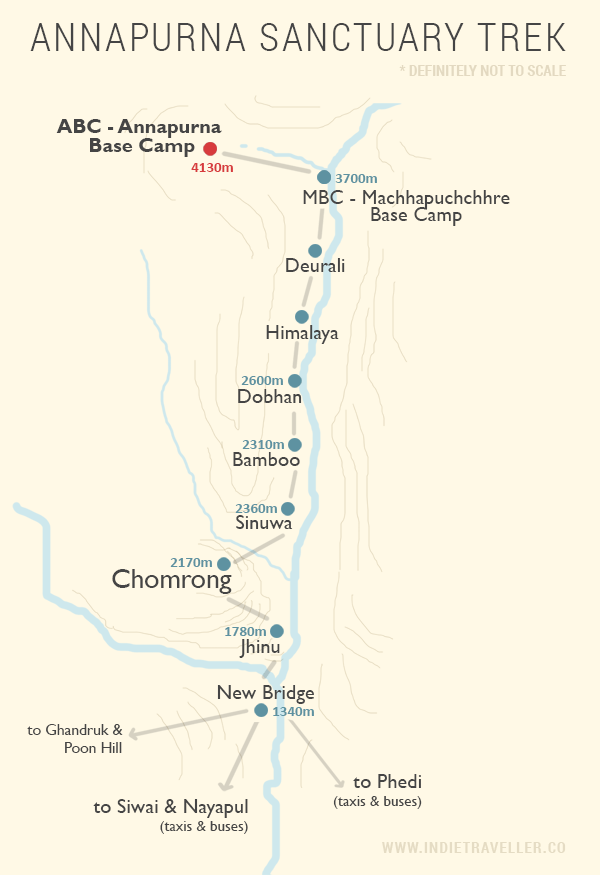
The Annapurna base camp is the highest point you can reach in this mountain range via a walkable path, i.e. without needing to be an alpinist or mountaineer.
Whatever you do, try to stay the night at least once at either MBC or ABC (the final two stops) both for acclimatization and to properly enjoy the stunning views. This is not a part of the trek you want to rush.
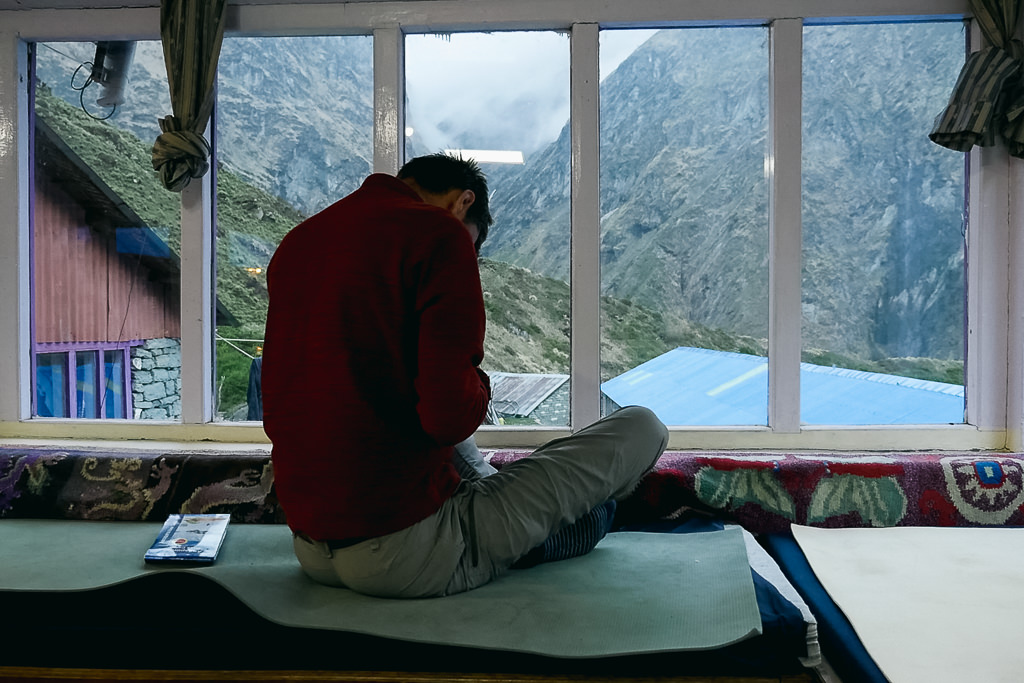
There are guesthouses all along the trek where you can eat, drink, or stay the night. Early on you’ll come across a guesthouse about every 30 minutes. In the final parts of the trek, they tend to be spaced about 2 hours apart.
There are a few shops in the town of Chomrong, which is about halfway up. Here, you can re-stock on snacks and basic supplies, though it’s best to do your shopping back in Pokhara where it’s a bit easier and much cheaper.
Costs for ABC Trek
These were my basic costs while trekking independently:
| TIMS permit (trekker registration) | $30 (~3000 rupees) |
| ACAP permit (national park entry) | $30 (~3000 rupees) |
| Taxi to your starting point | 1500~2000 rupees |
| Taxi back to Pokhara | 1500~2000 rupees |
| Lodging and food | About 2000 a day |
I trekked to ABC in 7 days and ended up spending about $200 in total, which is much less than the $400 – $800 that’s charged by companies for guided treks. (Note: permits still cost $20 when I went, but have now increased to $30. I updated the table above.)
My total cost includes a few extras I paid for, such as some hot showers, using WiFi once, a battery charge, and a couple of beers. Other than that it was just lots of breakfast, lunch, dinner, lodging, and lots of tea/snack breaks and water refills along the way.
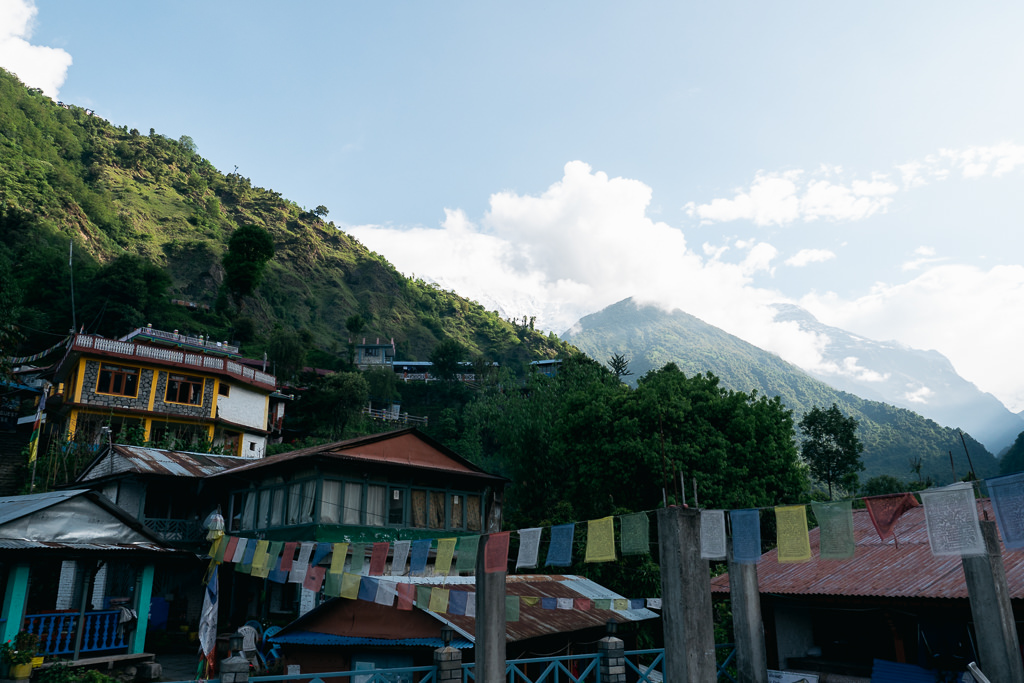
A frugal backpacker could probably bring this down to about $130~140, for instance by taking the bus from Nayapul or Chimrung instead of taking a taxi, not buying any extras, or eating mainly cheap local meals like Dal Bhat.
The guesthouses along the route charge a nominal fee for the beds (e.g. 200 rupees) though they expect you to buy your meals from them. Most meals are in the 500 to 700 rupees range, with menus and prices standardized by the national park.
A range of basic meals were on offer, including pasta, noodles, pancakes, a simple pizza, etc. Nothing fancy, but anything will taste delicious anyway after a long hike.
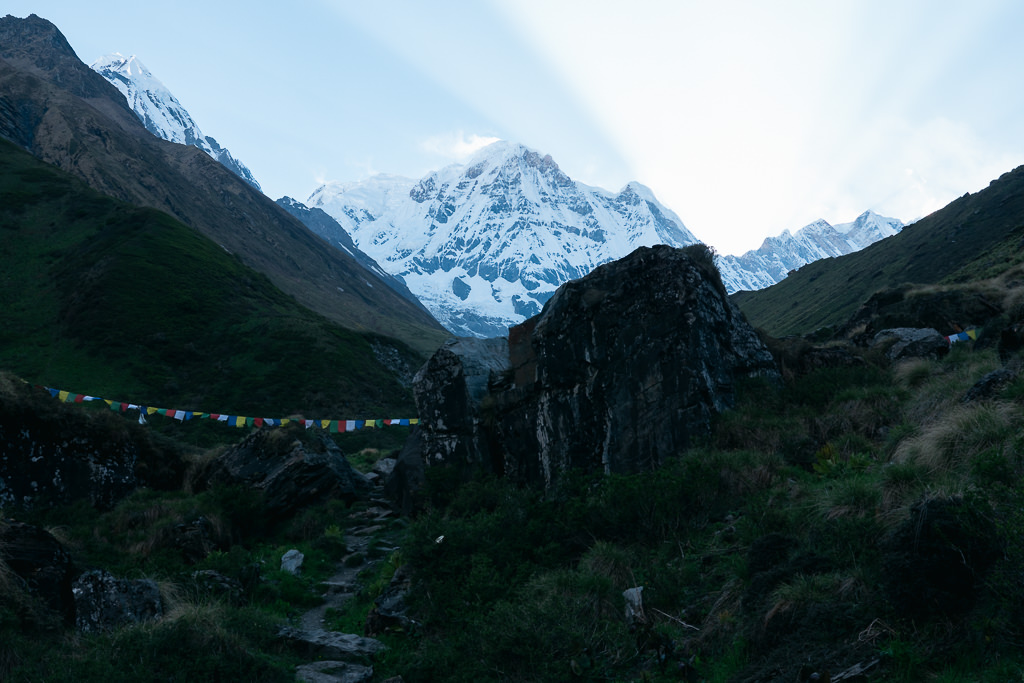
5 pro tips for trekking ABC
1. Get your permits!
You won’t get in the park without it. Get this at the Tourism Office in Pokhara [location]. You need four passport photos, which they can make for you on-site. Getting the permits is super easy.
2. Bring a refillable water bottle
It was heartening to see virtually no discarded plastic water bottles along the trail. You can help reduce waste by bringing your own bottle. You can get water refills (filtered) at most guesthouses.
3. Bring water purification tablets
You can get these from shops in Pokhara. Between the guesthouses, you can often find pipes delivering fresh water from the top of the mountains—pop in a tablet and you have safe drinking water.
4. Get a map
A map costs like $2 in Pokhara and even though the route is not complicated, it can still be pretty handy. You can also download MAPS.ME on your phone, which lets you view maps while offline.
5. Get a walking stick (seriously)
I’m not usually a walking stick kinda guy. I’m still somewhat young and spritely, so I don’t need any help, OK?
I rented some anyway at the insistence of the guesthouse owner in Pokhara (cost: $3) and I’m glad! It especially relieves a ton of pressure on your calves and knees on the way down. Highly recommended. I’ll never make fun of walking sticks again.
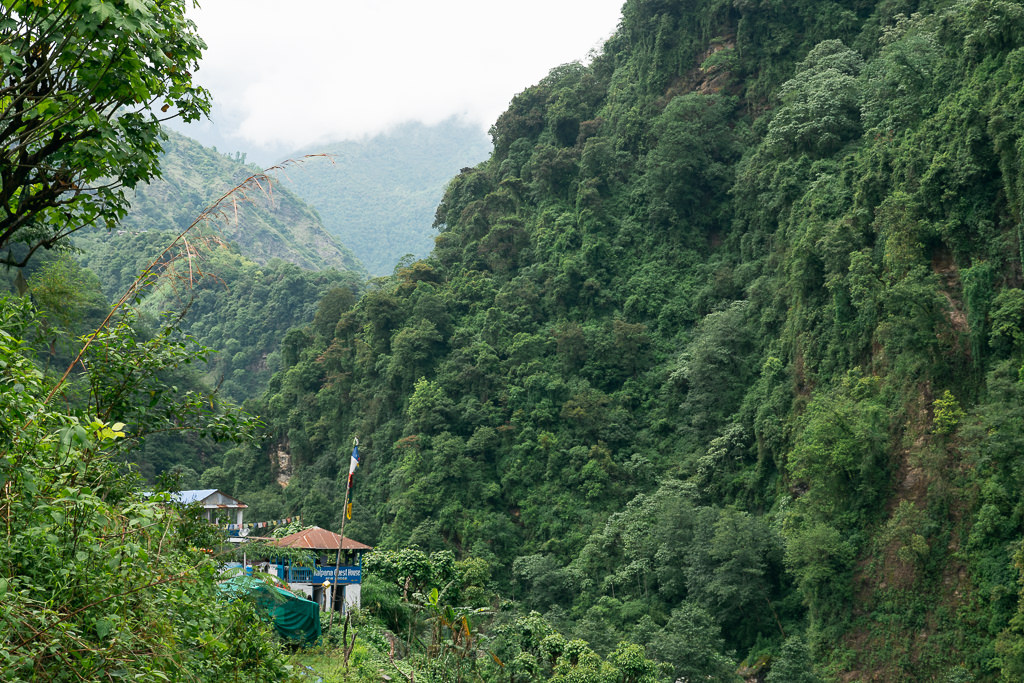
All I’m left to say is that this trek was one of the best things I’ve done in my travels. A trek such as this could take up a considerable chunk of your time in Nepal, but it’s absolutely worth it.
Whether you decide to hike the ABC Trek or one of the many others known to be less crowded — such as Langtang, Manaslu, or Mardi Himal — doing some mountain trekking is an essential experience in Nepal.
Some links may be affiliate links, meaning I may earn commission from products or services I recommend. For more, see site policies.
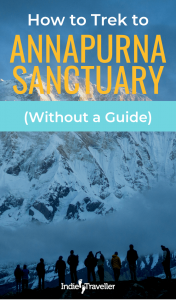
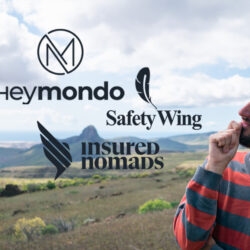
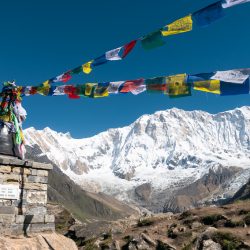
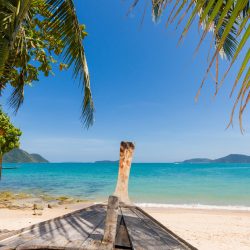
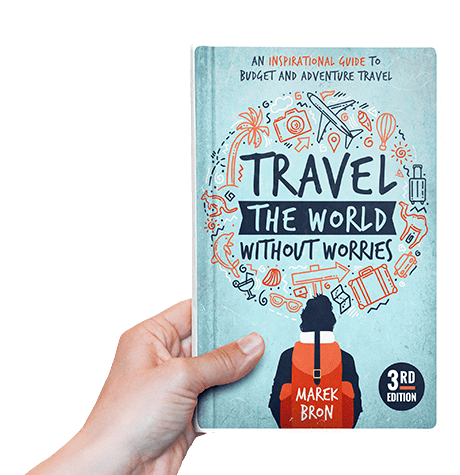



Hello,
I just want to know if I need to spend an extra day in Pokhara to get permit?
Is solo trek allowed now?
There is no wait time for the permit, so if you can visit the permit office, you should be able to get one there and then. Not sure about solo trekking.
Greeting From Nepal!
Great information!Had Great time reading this article.
Now, The permit cost is increase by 10$ so the permit cost is 30$ now for each traveler.
Nepal is absolutely best Himalayas country to visit. We are famous for soft to adventures activities. We aim to provide each and every kind of trip information regarding Everest region so below are the some trip link that We,Everest Thrill, offers in Nepal.
Island Peak Climbing
Everest Base Camp Trek
Mera Peak Climbing
Island Peak Climbing from Chhukung
Ama Dablam Expedition
Cho la Pass trek
It’s an extensive guide, Marek! I guess the permit charges have gone up now.
Thank you.
Super useful information. Thank you! Looking forward to doing this trek in April! Does anyone have experience doing it at this time? It is during the Nepali New Year, and I wonder whether Iwill need to book accommodation ahead of time or not.
Thanks for an informing article, Marek.
I am planning the ABC in late March this year and your write-up helps me.
For a solo traveller, what would be approximately the weight one will have to carry through the trek?
I suppose those who don’t want to carry no more than a day pack will need a Porter for the rest of his luggage.
Can you comment on this please?
Thanks.
If you stay and eat in the tea houses you need to carry only clothes/poncho/some gear snacks etc. You could do it with a (spacious) day pack… no need for a porter.
Hi, any advice on Travel insurance? Can you get the insurance if you’re doing ABC without a guide? thanks Karo
You can get your own travel insurance (like with World Nomads) which should cover mountain hiking
Great post! There was lot of useful information and reading it made me really look forward to my trek.
One question tho: What is the best way of getting back from ABC? Jhinu-Landruk-Kande?
Good write up, Marek.
Informative, useful…..encourages me to go solo for the ABC even though it would be the first time in Nepal for me.
I have done Himalayan trekking in India a few times, though.
Thanks for the write up.
I am thinking of going in October 2019.
With regards,
Arun
Mumbai, India
Good luck, Arun! 🙂
—- Here are some of your basic costs:
TIMS permit (trekker registration) $20 (~2000 rupees)
ACAP permit (national park entry) $20 (~2000 rupees)
Taxi to your starting point 1500~2000 rupees
Taxi back to Pokhara 1500~2000 rupees
Lodging and food About 2000 a day *
I trekked to ABC in 7 days and ended up spending about $200 in total, which is obviously way less than the $400 – $800 that’s charged by companies for guided treks —-
Was it necessary to write these things here. you don’t know may be about the Eco tourism and it’s importance to community. A travelers are not travelers until they help the local people from there travel. You know how many people are dependent on tourism sectors. perhaps a bloggers like you only prefers to write all things without thinking anything. be serious before you write …
Sorry for being rude
I encourage travelers to support the local communities whenever I can and have promoted ecotourism on many occasions. But some trekkers prefer to trek on their own, not with an unnecessary guide, so I’m giving them the information to make an informed decision.
Plenty of trekkers who are in groups or who come through travel agencies will still get guides. There are also plenty of other opportunities for Nepalese to profit from tourism whether it’s lodging, food, equipment, etc.
Great post Marek. Question: I am planning to incorporate Nepal trekking (likely Annapurna) into a longer, round the world trip. As a result I’ll be bringing extraneous items from Europe travels (Jeans, Button Downs, Day packs). Are there safe places to store these items in either Pokhara or Kathmandu for 7-10 days??
Yeah in Pokhara a lot of hostels/guesthouses will let you store stuff while you’re doing the trek. 🙂
Hi Marek
I am a Nepali but Indian born and been in Kathmandu couple of times but never been in ABC. But i am very interested in this ABC trek and i found your site. I don’t have friend how interested in these so thinking to going alone. you gave me courage and very soon i will go get back to you.
thanks again
So glad to hear that. Hope you have a great trek Roshan! 🙂
Thank you for all your informations. Nepal was on our list on our wolrdtrip. But with your help I booked a flight to Nepal and now I’m here in Kathmandu. In a few days we gonna start the ABC Treck. I’ll let you know if there are any changes, or how amazing it is. Cheers raphael
Hi Raphael. Glad you made it there – you’ll surely not be disappointed! 🙂 Would be great to hear your experiences!
Hi Raphael, we’ve just arrived in Pokhara to start the ABC in a couple of days. Can I ask a couple of questions? Did the guest houses provide bedding? We’ve read mixed comments on this. And, how cold was it? Would a few layers/hoodie/rain jacket be enough, and single layer of trousers? Thanks
Sounds like a doable trek! Is it safe for a solo, female traveler?
It’s doable but hard work! Yes, I saw a fair number of women do it solo and the trek is safe and well supported.
Thanks for all the info. I did this trek in 1998, with a hiker I met in Nepal, and I wondered if it is still possible to do it independently. I want to take my husband.
If you come to the US, look at the Thunder River trail into the Grand Canyon from the North Rim. It is a backpack you can do independently and inexpensively.
Thanks for all the details and explanation, very helpful and clarifying. I’ll go on mid May but I’m still deciding if I will do the circuit or the ABC, but thanks for all the information shared!
Nice blog Marek. I got to know something very adventurous and now I’m making a plan of trekking up over there.
I have a great passion for travelling and have witnessed many places in India and now I write about my experiences on my website.
I request you to view my website once TheHimalayanRide
Hi,
Thanks for the great post! I was wondering, do any of these teahouses need to be booked in advance? Or do you just show up there even during peak season in October and get accommodation?
Thanks!
Hey Alvaro. My understanding is that in the peak season it’s best to call ahead. The teahouse owners can make the call for you to the next teahouse you expect to reach that day.
Would it be possible to hire a guide/porter in Pokhara?
Don’t really need a guide but a porter will help for two 65 year old’s.
Thanks for your information. It was most informative.
Yep should be easy to find those in Pokhara. Check the trekking agencies all over Lakeside 🙂
I would like to get a porter as well! Planning to go in October of this year. Is a porter/ guide something that needs to be reserved online prior to going to getting to Nepal since its busy season? Or is this something that can be done the day we arrive to Pokhara/ day prior to embarking on ABC trek?
I went in low season so not 100% sure, but I’m willing to bet you can just show up and book this in Pokhara even in high season. Can often find better prices than booking online as well.
Hi! Thanks for the informational post. Found your insights extremely helpful. Would you be able to share the day by day trek (i.e., from which town to which town you hiked to each day), and how Poon Hill would fit in?
Not sure if you recall the number of hours/ km you hiked each day, but if so, would be great to hear that as well!
Thank you for your help!
Oof, good question 🙂 I can’t quite remember how I went the way back, but for the way up: on day 1 I started in Siwai and slept in Jinhu. Day 2 was Jinhu to Himalaya. Day 3 – Himalaya to MBC, where I spent the night. Then up to ABC in the early morning of day 4.
Thanks Marek!
How would Poon Hill fit into this? Which day would you have went up there, and how would you continue on the path once finishing at Poon hill?
Cheers
Hi Marek, your blog is really helpful. Thanks for writting it.
And your pictures are so great! May I know what kind of camera did u use?
Thanks, keep writting!
Cheers,
Thanks Pia 🙂 I shoot with a Panasonic GX8. I wrote about it here!
This was super helpful! Thanks so much for shedding light on doing this without a guide, it’s great to hear that it’s possible! I plan to get up there mid May 🙂
Marek, thanks for the blog.
Do you need to call for the lodges and tea houses to dream in it? Or you just arrive to this places and you have the bed?
I just arrived and had a bed. I’ve heard that the lodges can call ahead for you and make a booking. It wasn’t necessary when I went, but perhaps it is in high season.
Hi Marek, thanks very much for the response! That’s really helpful, clear views of the mountains would certainly be a must, and leeches, yeah, I’d certainly like to avoid them!
Great piece. I’ve read a few on the ABC and this is both really informative and well written. Can I ask a question please?
You mention that you were lucky with the weather. My partner and I are both teachers (one uni, one secondary school). As such the only decent window for visiting Nepal and doing the ABC is July – September – slap bang in the middle of the monsoon season! Do you think it is really impracticable to have a crack at the ABC at this time then?
Again, great post and blog, keep it up!
Best,
John
Hey John. Oof, very hard to say as I haven’t done it in the monsoon! All I can say is that with still a few weeks to go until the proper start of monsoon, half the guesthouses had already closed, so things do seem to really wind down. Hiking through the rain wasn’t so pleasant (leeches etc.) and we met people who were disappointed to only see clouds at the top. It could still be worth it just for the adventure, though I must admit having clear views of the mountains was definitely a huge part of the enjoyment for me. I guess you’ve just got to be lucky to get some dry and clear days!